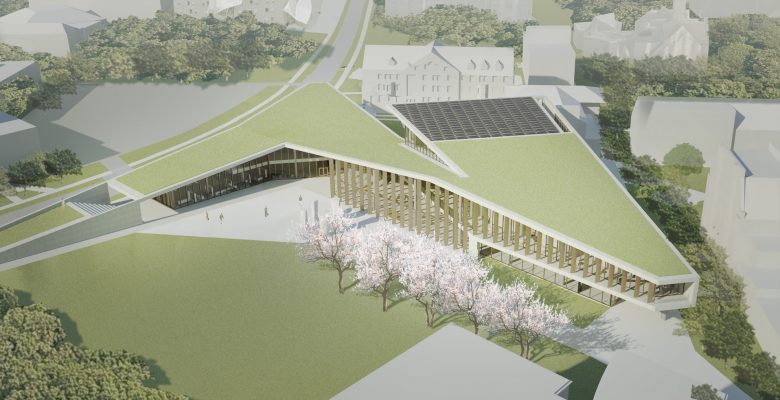Early in the development of the design for the Tinkham Veale University Center, the team determined that the west-facing glass wall of the Commons space presented challenges to the usability and conditioning of that space. The team proceeded to explore several options to control solar heat and light gain, including electrochromic glass, internal sun shading, fixed external sun shades and a double-skin wall with operable shading. Once the team determined that the double-skin wall was the best solution, they proceeded to perform a series of studies to validate that choice and determine overall functionality. The configuration of the glazing for each plane of the double-skin was studied to optimize performance. Multiple types and configurations of integral shading were studied for cost-effectiveness, durability and function. The team engaged in extensive study and exploration of the airflow through the double-skin cavity to guide the configuration of ventilation components. This work helped the team determine that passive ventilation was not a workable option and ultimately guided the team’s selection of ventilation fan locations, quantities and capacity as well as the locations and sizes of intake. Finally, the design team addressed issues of maintenance access and interface with the adjacent underground parking garage and completed the architectural detailing. The final combination of design elements for the double-skin façade (monolithic glass exterior plane; insulated glass interior plane; mechanical ventilation; 3’-0” wide cavity; and sun-controlled operable roller shades) met all of the project’s functional, aesthetic and energy goals and was deemed to be the best solution.
This article originally appeared in Vol 05.02 of the Perkins+Will Research Journal. CLICK HERE to see the whole article.

